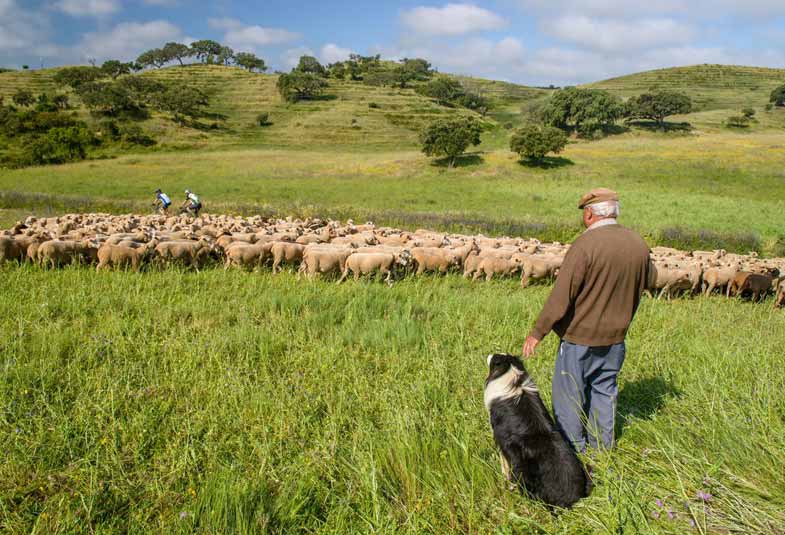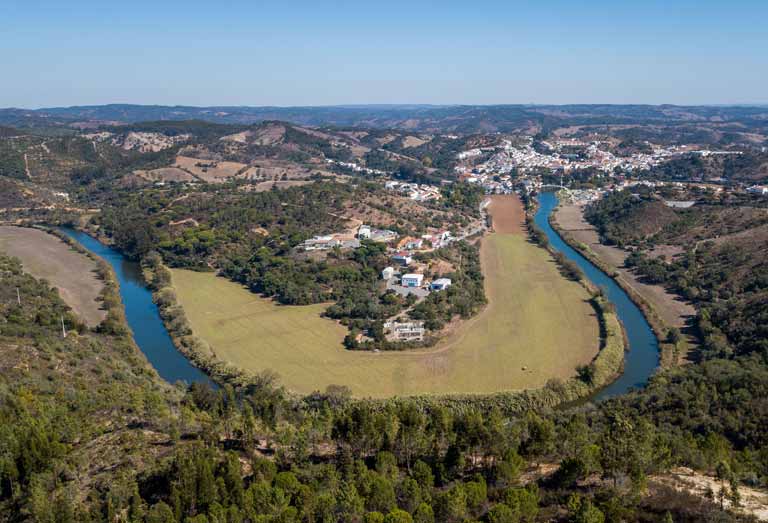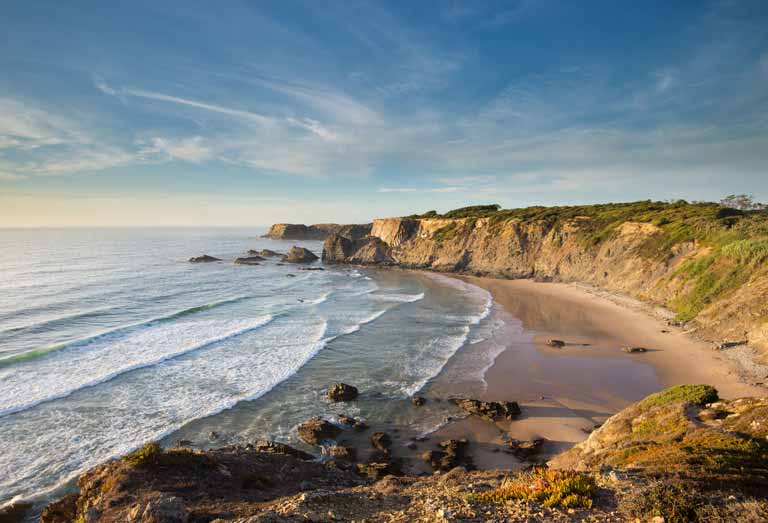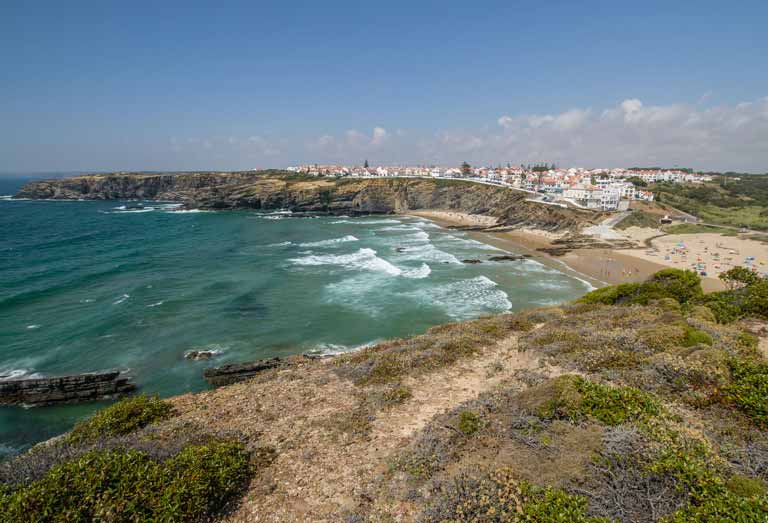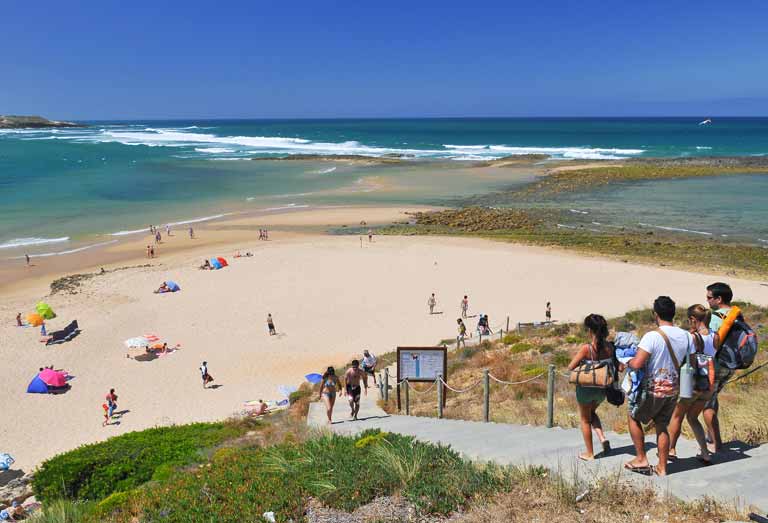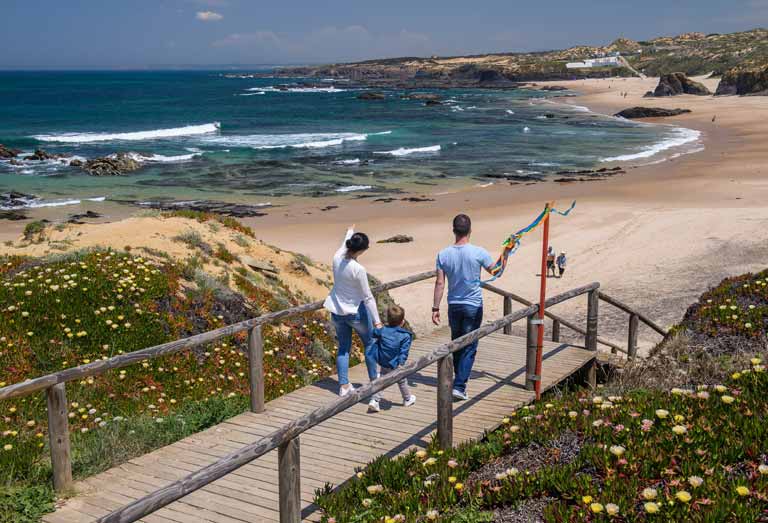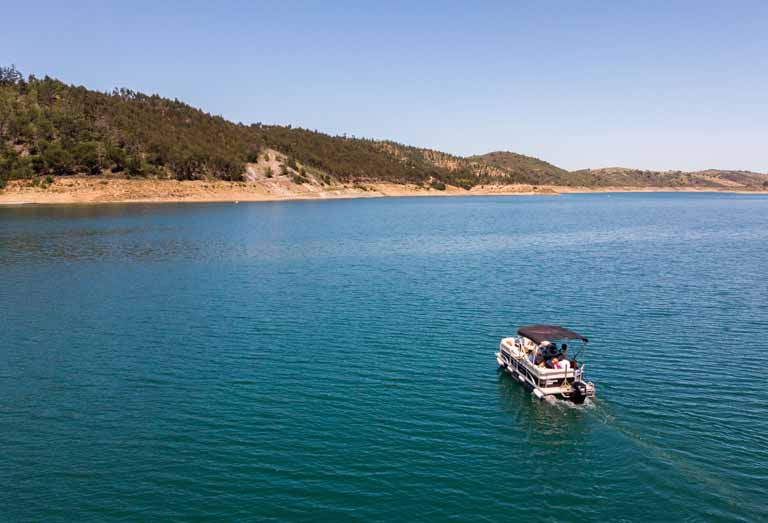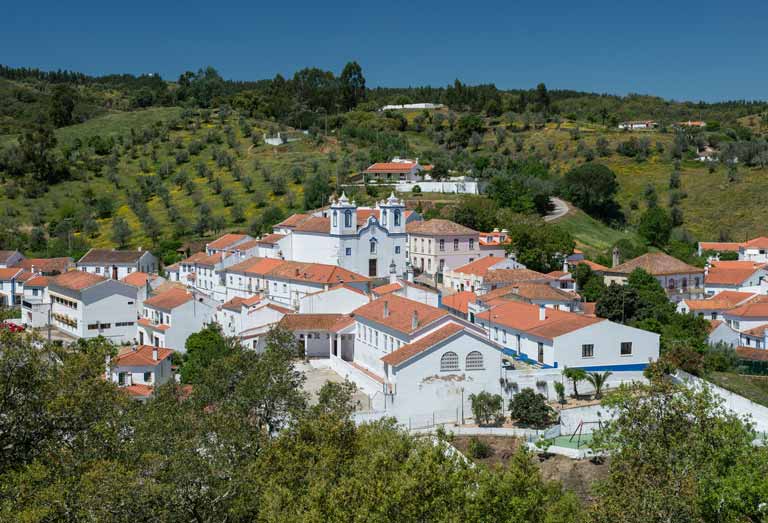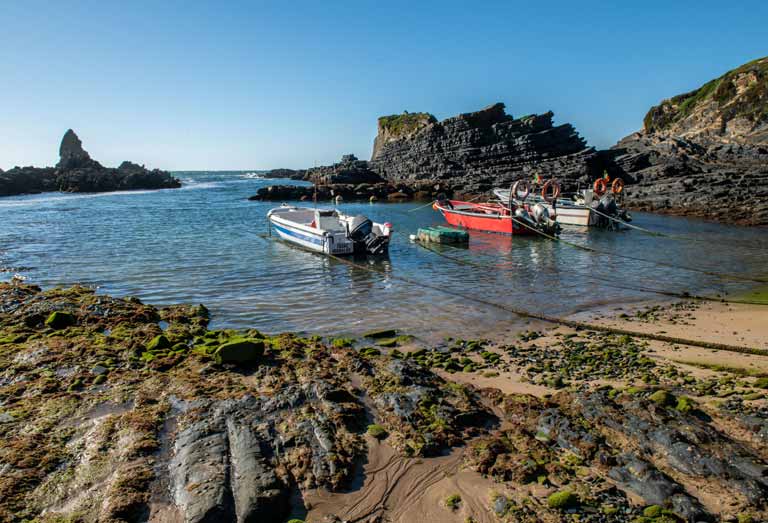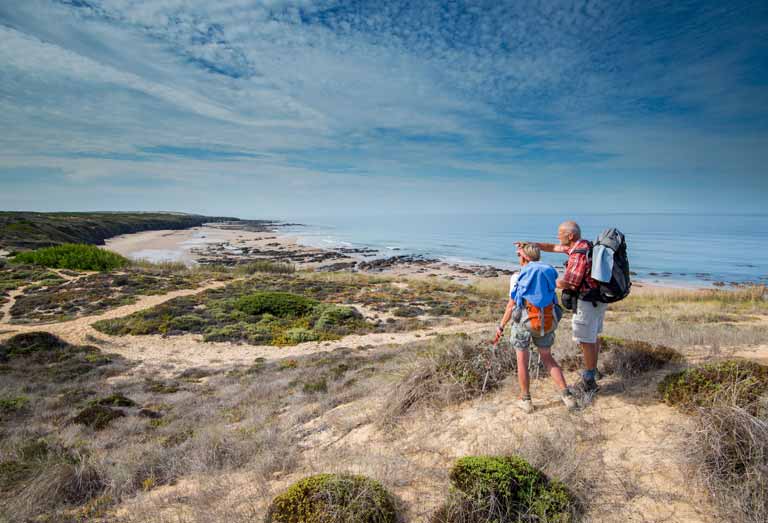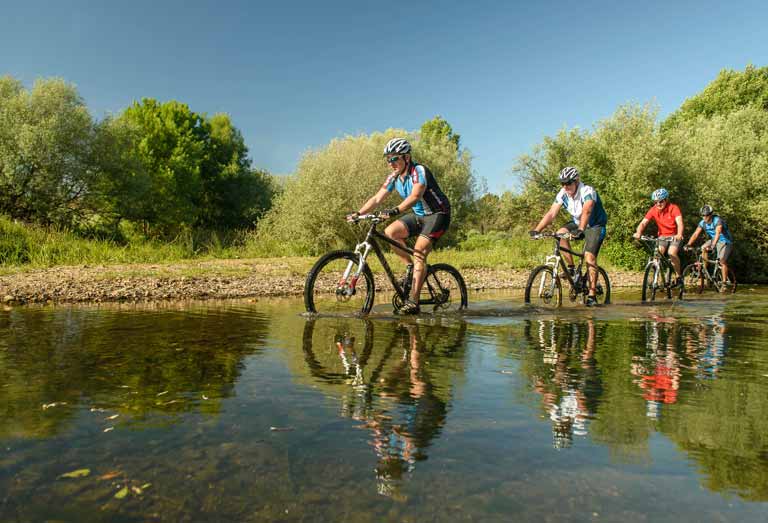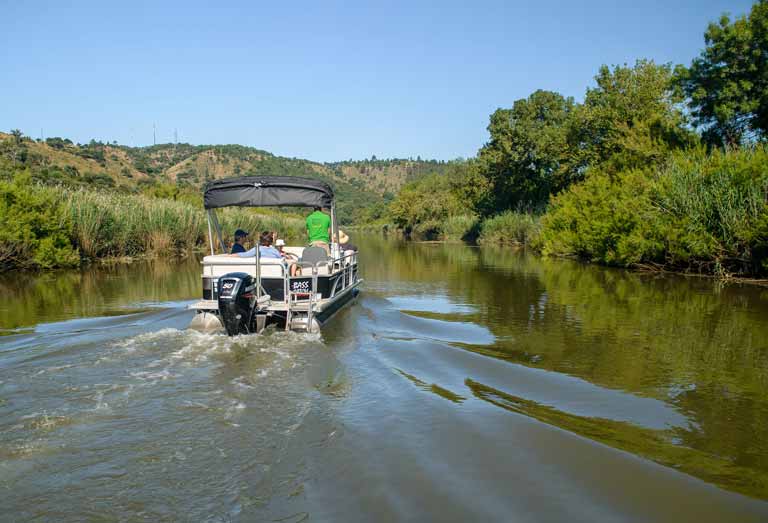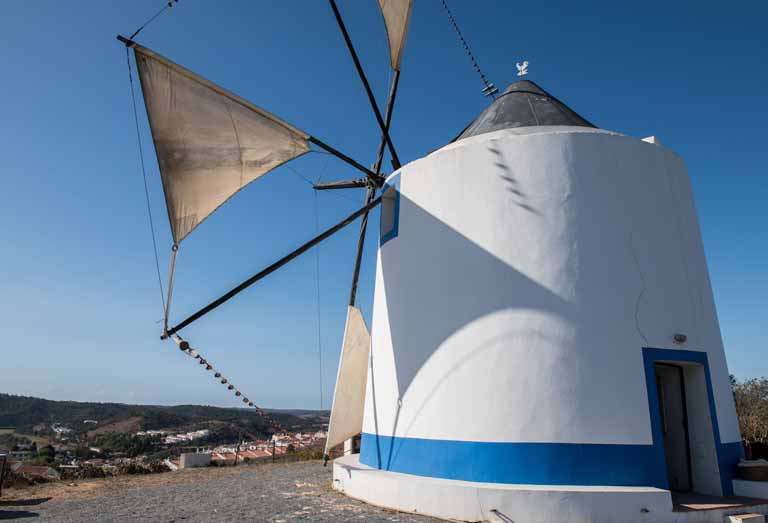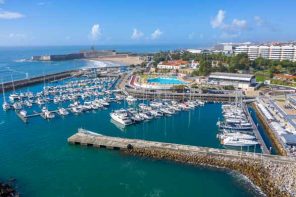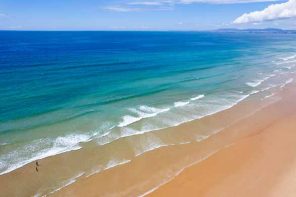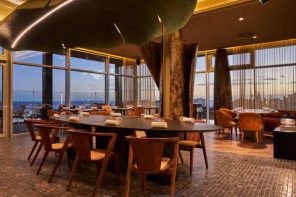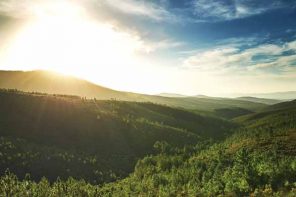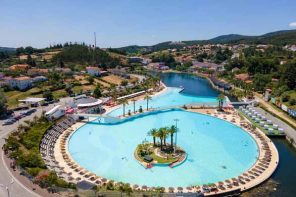ODEMIRA IS A UNIQUE AREA OF ALENTEJO, IN A SINGLE AND VAST TERRITORY, BETWEEN THE MOUNTAIN, THE PLAINS AND THE SEA.
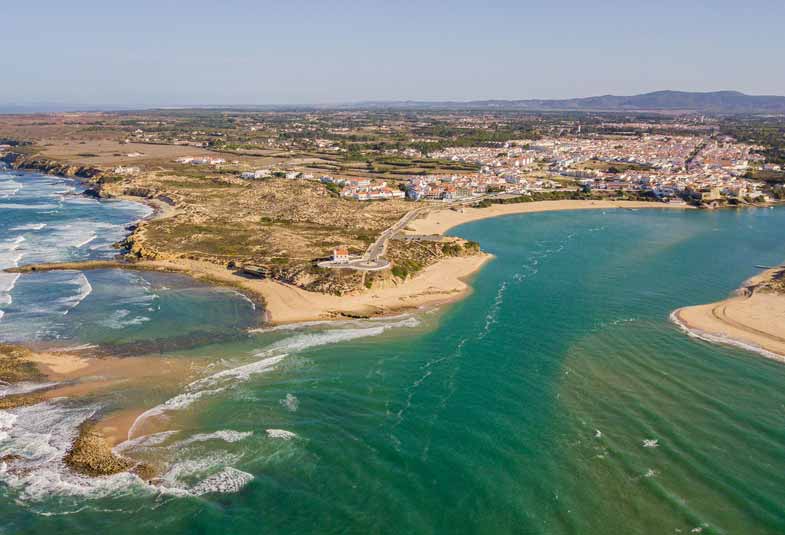
Vila Nova de Milfontes
The word that better describes this territory is diversity, both natural and cultural, with Mira River, Santa Clara reservoir, beaches and sea and river beaches, cliffs, fields and valleys, tradition, heritage, culture, gastronomy, old villages, and towns.
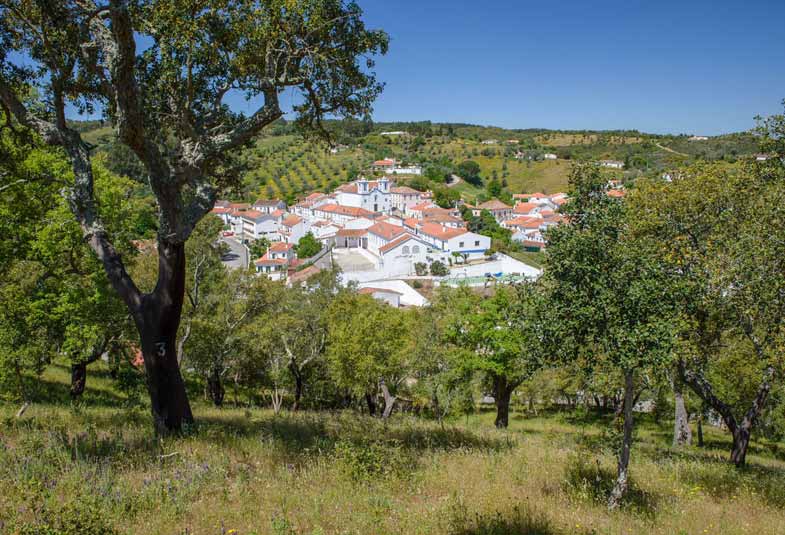
São Martinho das Amoreiras
Located on Alentejo Coast, in the District of Beja, this is the country’s largest municipality in terms of area, with 664 square miles! Throughout its 34 miles of coastline, at the Natural Park of Southwest Alentejo and the Vicentine Coast, there are the famous beaches of Malhão, Vila Nova de Milfontes, Furnas, Almograve, Zambujeira do Mar and Carvalhal, embedded on the high cliffs.
Santa Clara River Beach invites for some days well spent, where the water temperature is always appealing. They are Blue Flag beaches, of recognized quality, to enjoy as a family or a couple, to rest or to practice water sports such as fishing, canoeing, surfing, bodyboard, boat tours or SUP.
Santa Clara-a-Velha, an old village surrounded by Mira River and its Water Mirror, may be the starting point for a tour around the interior of the municipality, passing through other villages like São Martinho das Amoreiras and the archaeological monument of Necrópole do Pardieiro, Colos (historical village and former capital of the municipality), Relíquias, São Luís and the town of Odemira. Made of white houses, well preserved traditional and religious architecture, and narrow streets, they become villages and towns full of tradition.
The small traditional fishing ports – Portinho do Canal (Vila Nova de Milfontes), Lapa de Pombas (Almograve), Entrada da Barca (Zambujeira do Mar) and Azenha do Mar – are a must-see point to learn about traditional fishing. This is where the best coast fish and seafood come from.
The impressive Cape Sardão, close to the village of Cavaleiro, is the most western point of this coast and the only place in the world where storks nest by the sea. The landscape is inspiring and invites for long walks through walkways and viewpoints.
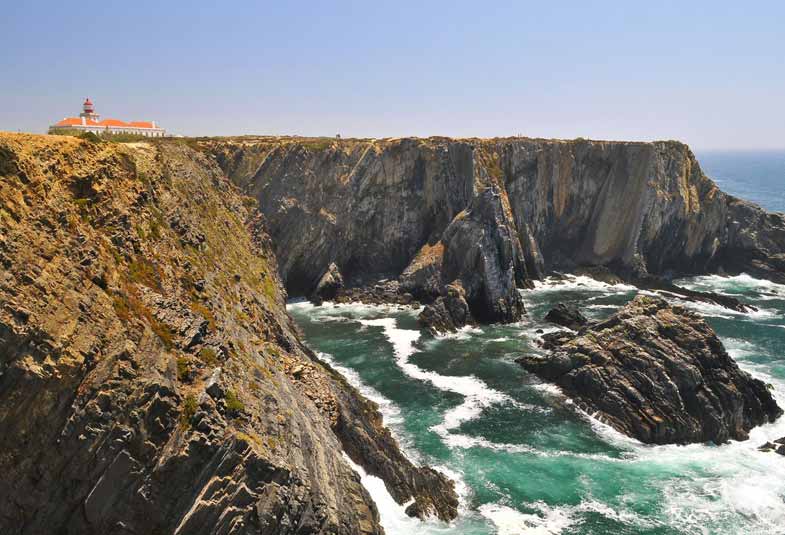
Cabo Sardão
The territory meets the ideal conditions for nature tourism, mainly the mountain biking, canoeing, and trekking, but also the nautical tourism. The region is crossed by the Vicentine Route, with the Historical Way, the Fishermen Trail, and dozens of circular trails, in different landscapes and self-guided, preferably between September and June. When planning your visit, contact the Vicentine Route (www.rotavicentina.com) and then venture into one of the most beautiful routes in the world, either on foot or by bike.
Nature granted Mira River the beauty and mankind respected its authenticity. Walking between the estuary in Vila Nova de Milfontes and Odemira, in the heart of the Natural Park is finding a fresh flow rate, rich in fauna and flora, history, culture and tradition. Once an important route of communication and trade, nowadays it is wanted for sports and tourism.
“Cante ao baldão” (traditional local music) and improvised, campaniça guitar, “cantares alentejanos” (Alentejo singing) and a quite diversified handicraft with ancient techniques and new approaches form a unique mixture of traditions. Find CACO shop, by the Local Craft Association, the artists and craftsmen workshops spread around the territory or visit FACECO – Fair of Cultural and Economic Activities of the Municipality of Odemira, always on the 3rd weekend of July, where you will find dozens of local craftsmen working right before your eyes.
In gastronomy, the offer is varied and Odemira provides the best tastes of the countryside and the seaside, among appetizers and dishes prepared with time and know-how. Here you will find “Sw Medronho”, a fruit brandy mastery produced from the fruit of the arbutus, a real tradition in liquid state.
The best thing is to start exploring Odemira!
